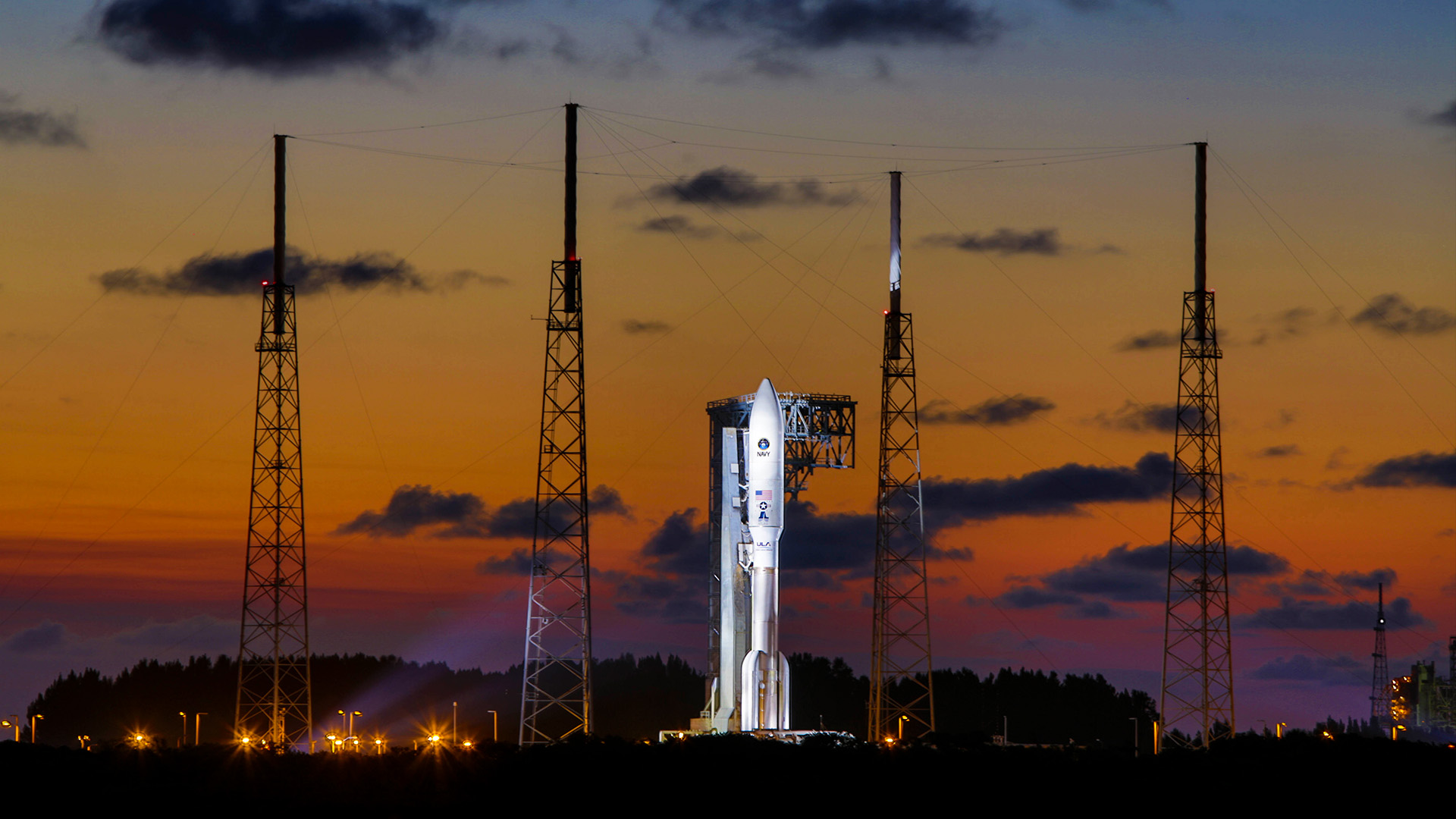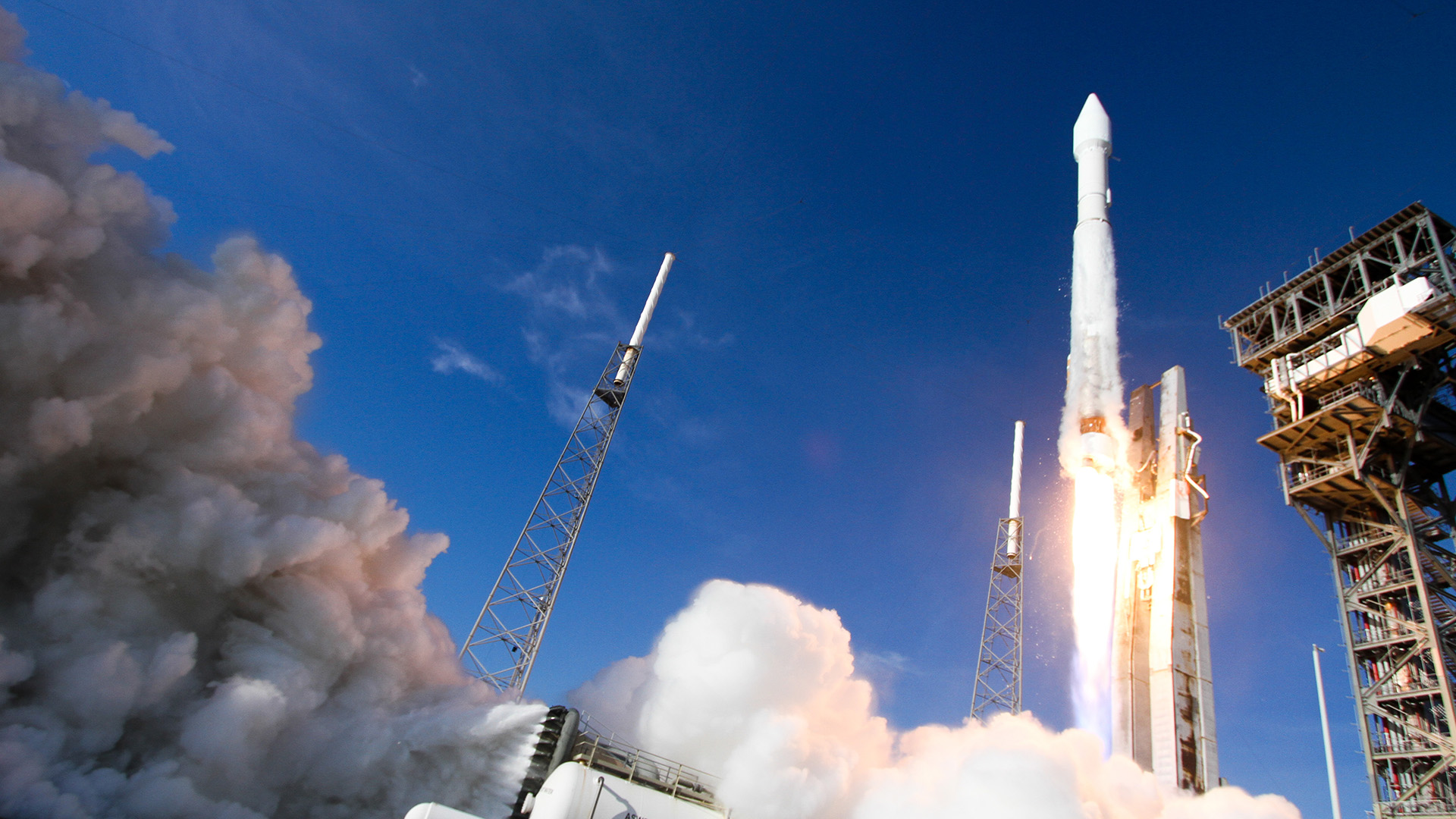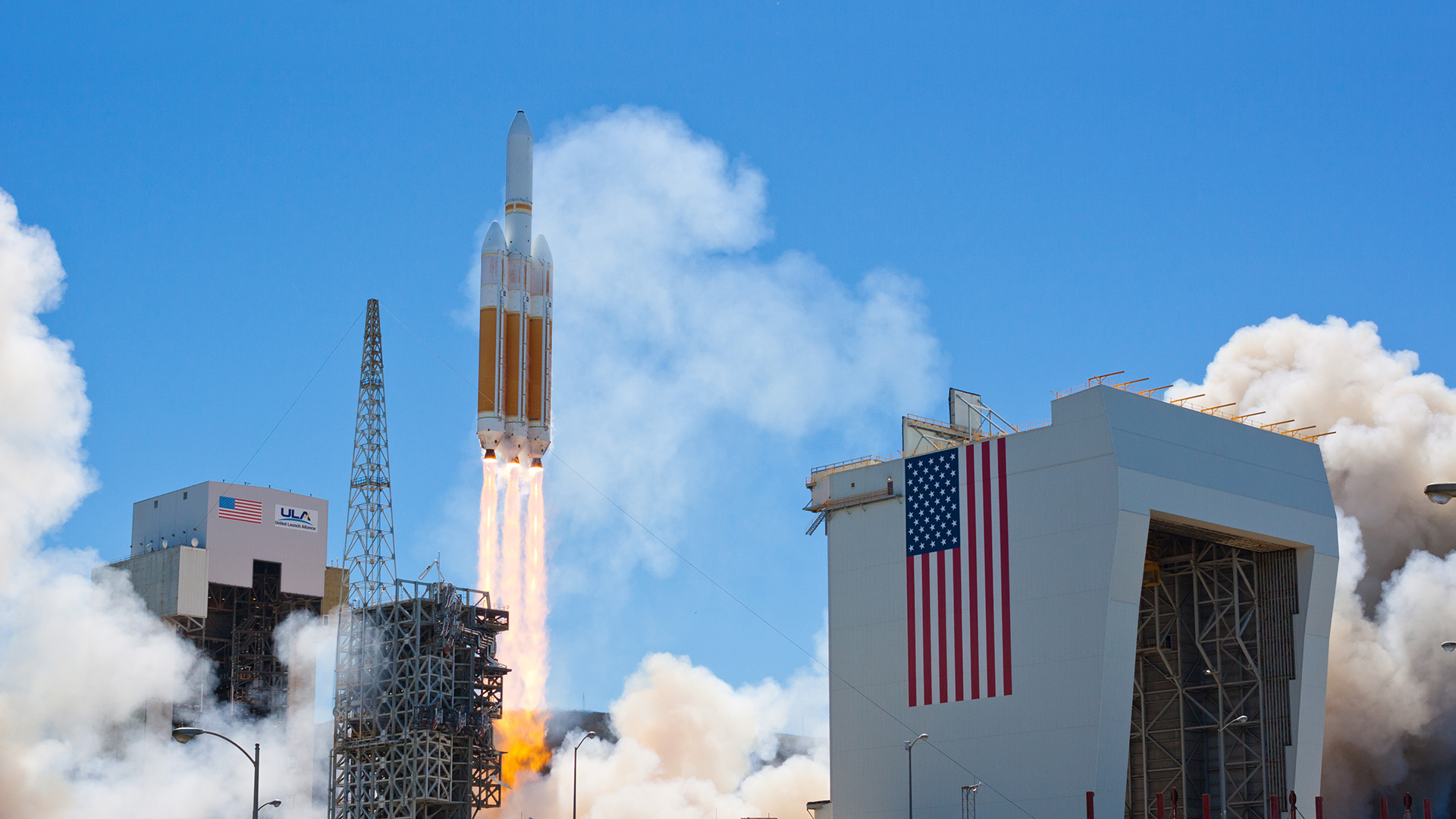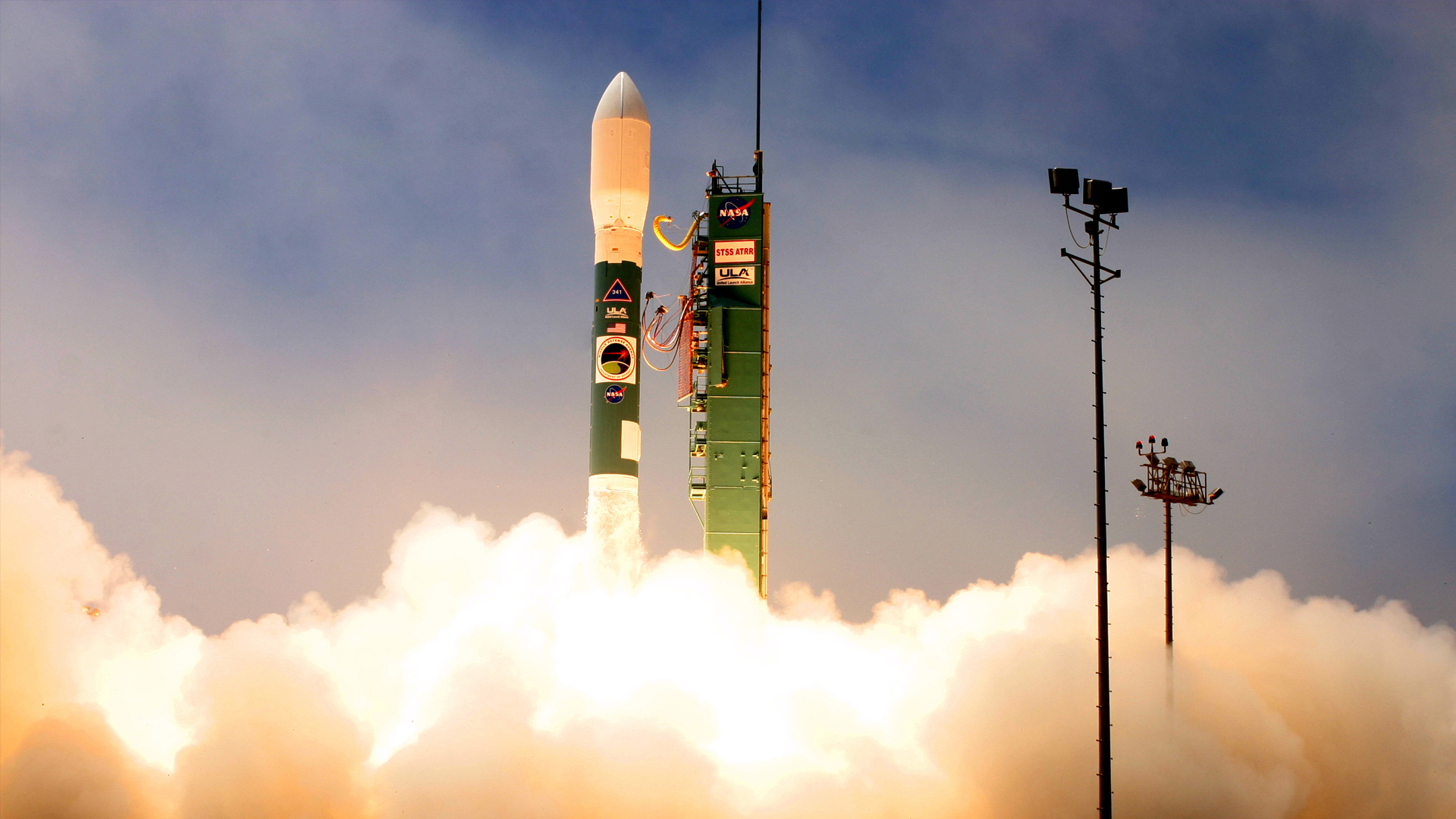Missions
Next LaunchULA Successfully Launches GLAST Mission for NASA
Delta II Heavy GLAST Mission Booklet
CAPE CANAVERAL AIR FORCE STATION, Fla., June 11, 2008 -- A United Launch Alliance Delta II Heavy rocket successfully launched the Gamma-ray Large Area Space Telescope (GLAST) at 12:05 p.m. EDT, today. Blasting off from Space Launch Complex 17B here, it marked the first NASA mission conducted by ULA this year.
Following a 1 hour and 15 minute flight, the GLAST spacecraft was deployed on its journey and will begin to transmit photos and data beginning approximately three weeks after launch. The telescope will explore the most extreme environments in the Universe, seeking to understand what composes the mysterious dark matter, explaining how black holes accelerate immense jets of material to nearly light speed, and helping crack the mysteries of the exceptionally powerful explosions known as gamma-ray bursts.
"Today's launch was the culmination of tremendous teamwork by NASA, ULA and the Air Force to ensure that GLAST received a safe and accurate ride to orbit," said Jim Sponnick, vice president, Delta Product Line "ULA has a long history of providing reliable launch services for NASA's space exploration missions and we are honored to have played a vital role in supporting this critical mission that will help to unlock the mysteries our universe."
NASA's GLAST mission is an astrophysics and particle physics partnership developed in collaboration with the U.S. Department of Energy and important contributions from academic institutions and partners in France, Germany, Italy, Japan, Sweden and the U.S.
The ULA Delta II Heavy 7920H configuration vehicle featured a ULA first stage booster powered by a Pratt & Whitney Rocketdyne RS-27A main engine and nine Alliant Techsystems (ATK) strap-on solid rocket motors. An Aerojet AJ10-118K engine powered the second stage. The GLAST payload was protected during launch by a 10-foot-diameter composite payload fairing.
ULA began processing the Delta II launch vehicle in Decatur, Ala., nearly two years ago. In January, the second stage arrived at Cape Canaveral Air Force Station from Decatur, followed by the first stage in February. The vehicle was erected on the stand at Pad 17-B March 26, with solid rocket motor installation completed by early April. Hundreds of ULA technicians, engineers and management worked to prepare the vehicle for the GLAST mission.
ULA's next launch is the OSTM/Jason-2 mission for NASA scheduled for June 20 aboard a Delta II rocket from SLC-2 at Vandenberg Air Force Base, Calif.
ULA program management, engineering, test and mission support functions are headquartered in Denver, Colo., supported by transition employees in Huntington Beach, Calif. Manufacturing, assembly and integration operations are located at Decatur, Ala., Harlingen, Texas, San Diego, Calif., and Denver, Colo. Launch operations are located at Cape Canaveral Air Force Station, Fla., and Vandenberg Air Force Base, Calif.
For more information on the ULA joint venture, visit the ULA website at http://www.ulalaunch.com, or call the ULA Launch Hotline at 1-877-ULA-4321 (852-4321).





